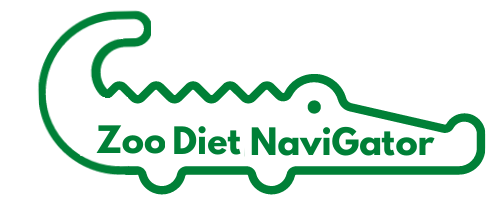Report types
From ZDN User Guide
Report formats can be quite confusing. Here are some terms to help understand what the intentions for the different Diet Card reporting formats are:
- Main types of reports - these select whether you are viewing just the diet you are viewing (Individual) or all the diets in the group that this diet is in (Group).
- Individual diet reports will show the amounts for the animal (or animals) listed on a single diet (i.e. Diet #42).
- Grouped diet reports will show the combined diets for all of the different individual diets that are part of that group (i.e. Group #9041 Aviary 1 Group)
- Four main styles
- For sharing and communicating
- Diet Plan - this is the general plan for food prep on as few pages as possible.
- Feed Plan - this is similar to the diet plan, but shows the days foods are fed, which is not always the same as they day they are prepped. For example, you might send a week's worth of pellets on Sunday for the keepers to feed daily. The Diet Plan would show 700 g of pellets on Sunday. The Feed Plan would show 100 g of pellets each day of the week.
- For food prep
- Prep Plan - this is the same as the Diet Plan, but separates each prep station onto its own page. If a diet has some items prepared by the Meat Table, and some items prepared by the Veggie Table, then this will print a page with the Meat Table items and a page with the Veggie Table items so you can put two pages into two books. If you print paper books, this is the one to print.
- Assembly diet plans (only available for grouped diets) assume that you are prepping a single food at a time across multiple diets at once, rather than preparing an entire single diet at a time. This is common in aquaria and sometimes with meat prep where you will do all the herring at the same time, or all the large rats. Because Assembly reports have unique formatting, and because diets can have unique rotations (with foods every 2nd or 3rd week, for example), these reports are tied to specific dates rather than producing a generic report that can sit in a notebook indefinitely until the next diet change. When you choose an Assembly Report, you'll need to also pick the dates for that report. Assembly reports are available in Individual (shows each diet) and Summed versions (shows group totals).
- For sharing and communicating
- Grouped Diet Options - grouped diets have several additional options
- GROUP - All Ind Diet plans - generates a single PDF with a separate Individual Diet plan for each diet within the group. This will look just like a series of Individual Diet Plans in a single document.
- GROUP - Summed plans - generate a plan that is the sum of all the diets in the group.
- For example, if diet #72 is for 6 ducks, and diet #88 is for 12 geese, and diet #94 is for 2 swans. These animals all live together in the "Front Lake". You can put these three diets together into a group for "Front Lake Waterfowl", then the GROUP - Summed plan report will total the amounts for diets #72, #88, and #94. You can print this in the Diet, Feed, or Prep version.
- The ASSEMBLY grid report produces a weekly grid/calendar style report with the foods for each individual.
